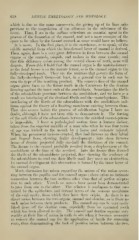Page 618 - My FlipBook
P. 618
628 DESTAL EMBRYOLOGY AND HISTOLOGY. : ,
which is due to the same cause—viz. the giving up of its lime salts
previous to the coagulation of the albumen in the substance of the
tissue. Thus, I see in the stellate reticulum an essential agent in the
process of the formation of the enamel, and not a mere occupier of the
space to be taken by the formed enamel, as some would have us believe.
It is more. In the first place, it is the storehouse, so to speak, of the
calcific material from which the first-formed layer of enamel is derived.
Then, again, there is a very great difference in form between the enamel
organs of the centrals, cuspids, and molars in the sauie mouth ; and
that this difference exists among the several classes of teeth, none will
dispute. From this I hold that the enamel organ is the matrix-former
as the foetal femur is to the mature femur, so is the enamel organ to the
fully-developed tooth. They are the matrices that govern the form of
the fully-developed tissue—at least, in -a general Avay in each can be
seen the type of the resulting product. The concave face of the enamel
organ gives form to the future tooth in the Carnivora by the dentine
forming against the inner ends of the ameloblasts. Sometimes the fibrils
of the odontoblasts penetrate between the ameloblasts, and we have as a
result an interlacing of the dentinal fibrils and the enamel-prisms. This
interlacing of the fibrils of the odontoblasts with the ameloblasts mil-
itates against the theory of a limiting membrane existing between them.
That this occurs before the process of calcification begins I have no
doubt, although I have not been able to demonstrate it. The forcing
of the soft fibrils of the odontoblasts between the calcified enamel-prisms
is impossible. I have a pathological section from a human incisor,
taken from the superior maxilla of a man who when he was four years
of age was kicked in the mouth by a horse and seriously injured.
When his permanent incisors erupted, they had furrows on their labial
and lingual faces, showing faulty develojmient ; into these furroM'S
horns of dentine projected fully one-half the thickness of the enamel.
The fissure in the enamel probably resulted from a displacement of the
ameloblasts at the time of the accident. Into the fissure thus formed
the filn'ils of the odontoblasts ])rojected, thus showing the tendency of
the odontoblasts to send out their fibrils until they meet an obstruction.
In normal develo])ment this obstruction is formed by the inner layer of
the enamel organ.
Much discussion has arisen regarding the nature of the unioti occur-
ring between the papilla and the enamel organ ; there exists no intimate
connection between the two surfiices other than that of perfect adapta-
tion to each other. A'^essels or nerves have never been demonstrated
to ])ass from one to the other. The relation is analogous to that sus-
tained by the e])ithelium and dermal layers of the mucous membrane
of the oral cavity, from which they have their origin. As there is no
direct union between the two organs, enamel and dentine, so is there no
fiiu'h union between their products. The enamel cap can be very easily
lifted from off tlie dentine cone, especially from an extracted tooth
which has been allowed to dry. The enamel and dentine separate very
readily at their line of union in teeth in sifii when it becomes necessary
to remove the enamel cap for the ap})lication of bands for crowning
roots, thus demonstrating the lack of positive union between the two.


